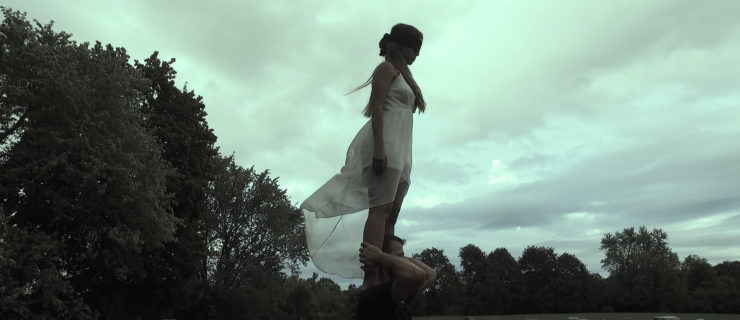Arthur Mitchell: "You Must Believe in What You're Doing And, Against All Odds…Stick to It."
Throughout his remarkable career, the fiercely determined, intelligent and energetic Arthur Mitchell has become accustomed to being called a trailblazer. “Being a typical Aries, I like being the first,” he says, laughing. “That’s what I’ve been doing all my life.”
This is true, especially when it comes to the discussion at the forefront of today’s national dialogue about dance: diversity in ballet.

Arthur Mitchell as Puck in A Midsummer Night’s Dream, 1962. Arthur Mitchell Collection, Rare Book & Manuscript Collection, Columbia University.
This weekend, “Arthur Mitchell: Harlem’s Ballet Trailblazer,” an exhibition celebrating the accomplishments of New York City Ballet’s first African American principal dancer and co-founder of Dance Theatre of Harlem, opens at Columbia University’s Miriam and Ira D. Wallach Art Gallery.
Back in 1975, Mitchell told Dance Magazine, “We have to prove that a black ballet school and a black ballet company are the equal of the best of their kind anywhere in the world.” Both his own performing career and the critical response to DTH in the years immediately following its official debut would have been enough for him to say “mission accomplished.”
But, clearly, Mitchell says, there is still work to be done. That’s where young, up-and-coming trailblazers come in.
Sharing advice he received from George Balanchine and Lincoln Kirstein, Mitchell says, “They said, ‘You’ve got to take the bull by the horns and do what you have to do. You must believe in what you’re doing and, against all odds, against anyone else’s feeling and vision, you must stick to it. And, eventually, know that the world will catch up with what you’re doing and appreciate it.’ ”

Studio outreach class at the Dance Theatre of Harlem, 1970s. Arthur Mitchell Collection, Rare Book & Manuscript Collection, Columbia University.
Has the world caught up with his own dreams and visions?
“No,” says Mitchell. “How many black girls are there now dancing in ballet? Name all the companies in America. How many have a leading African-American ballerina? There’s only one in a major company, that’s Misty Copeland in American Ballet Theatre. There’s still work to be done. There’s got to be more training. There’s got to be teachers who are working in the black communities that are taking into account what these dancers have to face.”
While he is no longer director of Dance Theatre of Harlem, Mitchell, now 83, continues blazing trails under the auspices of the Arthur Mitchell Project, which is funded by the Ford Foundation.

Arthur Mitchell shortly after joining the New York City Ballet in 1955. Photo by Carl Van Vechten. Arthur Mitchell Collection, Rare Book & Manuscript Collection, Columbia University.
The “Harlem’s Ballet Trailblazer” exhibit features an amazing array of treasures from a life well-lived, including the telegram from Lincoln Kirstein to Mitchell inviting him to join the New York City Ballet and an eight-foot-long DTH puzzle created by Frank Bara in 1991 that chronicles the first two decades of the company’s history with illustrative detail of its artists, heroes and friends.
On view also is dancer Charmaine Hunter’s costume and headpiece designed by Geoffrey Holder for Firebird (1982), one of DTH’s signature works. There are posters from DTH’s innumerable tours, photos, performance footage of Mitchell in Agon, Four Temperaments, Midsummer Nights Dream and more. The exhibit also has an online component that will include a detailed timeline and numerous essays, all open to the public.

Dance Theatre of Harlem ballerina Lydia Abarca, 1970s. Arthur Mitchell Collection, Rare Book & Manuscript Collection, Columbia University.
“This exhibition pays homage both to Mitchell’s creative magic and to his visionary achievements, revealing to those who never saw him dance his charismatic stage presence and the full scope of his career as an artist,” says curator Lynn Garafola. “At the same time, it places the Dance Theatre of Harlem, which he co-founded and directed for more than 40 years, at the crossroads of political, artistic and racial change in the United States and beyond.”
The show will run through March 11.




